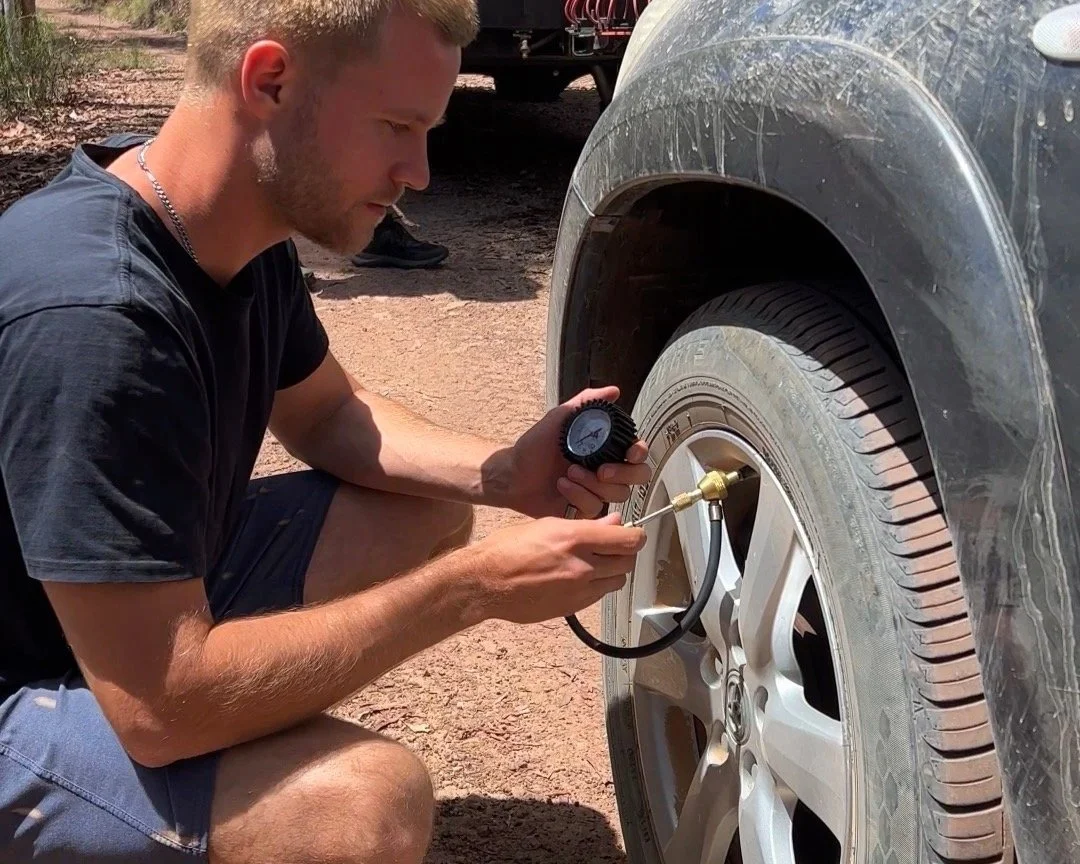TYRE PRESSURE
Understanding when to deflate your tyres and maintaining optimal pressure is crucial for 4WD enthusiasts venturing off-road through challenging terrains as this can significantly affect the overall performance of your car; including both traction and handling within diverse terrains.
Adjusting tyre pressure according to the specific conditions encountered will ensure both you and your 4WD have a much more comfortable and enjoyable journey! Off-roaders typically lower tyre pressure when encountering softer surfaces such as sand, mud or snow. Doing so, greatly increases the surface area which allows for better traction by enhancing the grip on loose or uneven terrain and reduces the likelihood of getting stuck.
Tyre pressure is constantly altering through steering, braking and acceleration. When the tyre increases in heat, so does the pressure therefore the impact of off-roading plays a factor in the alteration of this. The colder the air within the tyre, the lower the pressure becomes. Due to the constant change, it is important to have regular checks of your tyre pressure.
What you’ll need: air compressor and a deflator/gauge.
Tyre pressure for gravel roads and general outback dirt tracks:
General gravel roads: 35psi
Rough gravel: 26psi to 32psi
Jagged rocks: 16psi to 24psi
Crook gravel roads and tracks: 26psi
Tyre pressure for dry clay and muddy terrain:
Cleared muddy tracks: 20psi to 25psi
Bottomless muddy tracks: 22psi
General used clay tracks: 20psi to 25psi
Ruts and rugged: 16psi to 20psi dry and muddy
Tyre pressure for sandy terrain and the beach:
Beach sand: 15psi to 16psi
Sand dunes: 13psi to 18psi
General sand tracks: 20psi to 25psi
Recovery: 6psi to 10psi
Rule of thumb: Avoid using to low of a pressure as tyres can easily pop off the rim in trenches and large potholes. Same goes for using too high of a pressure, as tyres become more prone to damage and punctures.
Rule of thumb: Avoid going anything lower than 15psi as you run the risk of the tyre rolling off the rim completely.

